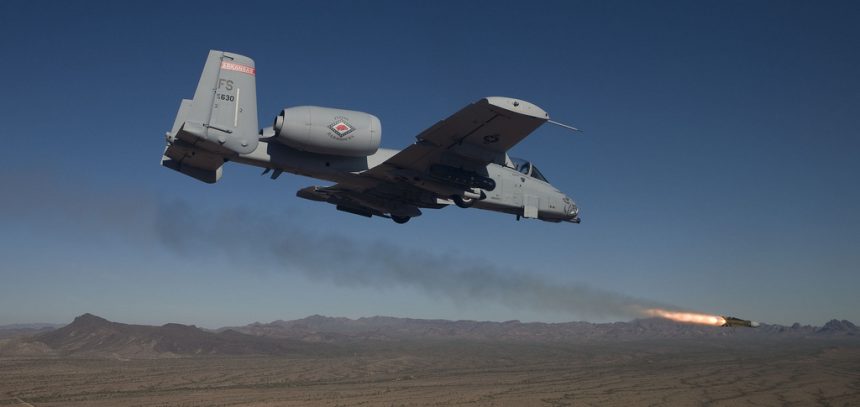An A-10 pilot had to land his Thunderbolt at Al Asad Air Base in Iraq’s volatile Anbar province.
A U.S. Air Force A-10 Thunderbolt involved in a mission in support of Operation Inherent Resolve, was forced to perform an emergency landing at Al Asaid Air Base, in central Iraq, west of Baghdad.
According to the information released by CENTCOM, one of the A-10’s engines suffered “catastrophic damage” during a “routine” aerial refueling operation. The official release did not say when the incident occurred.
The “catastrophic damage” fueled speculations that the engine might be hit by surface-to-air missiles or other kind of anti-aircraft weaponry (especially because the A-10s operate at low altitude and have already been targeted by MANPADS in Iraq) during the mission (and not during a refueling operation), however, according to Stars and Stripes, Col. Patrick Ryder, a CENTCOM spokesman, told reporters that the plane was not hit by enemy fire, and he downplayed the incident.
Ayn al-Asad Airbase, the Sunni western Province of Al Anbar, was one of the largest Iraqi airbases, and the second largest US military airbase in Iraq until the last Marines withdrew from the country and the installation was closed on Dec. 31, 2011. Since late October 2014, the airbase, that hosts several U.S. Marines and advisors for the local security forces, has frequently been under attack by Islamic State militants.
It took several days to the maintainers from 332nd Expeditionary Maintenance Squadron to fix the aircraft so that it could be flown out of the unsecure base.
The A-10 is famous for being exceptionally tough and able to survive direct hits from armor-piercing and high-explosive projectiles. Anyway, regardless to whether the aircraft suffers a hit from enemy ground fire or a catastrophic failure, there is always a risk when you fly over a war zone. In this case the pilot was lucky enough to have a nearby divert field where he successfully landed; on Dec. 24, Royal Jordanian Air Force pilot Muath Safi Yousef al-Kasasbeh was forced to eject from his F-16 over Syria as a consequence of a mechanical failure (according to official sources – ISIS claimed the plane was hit by a heat-seeking missile). He was captured (an attempt to free him failed) and burned to death by Islamic State militants in January 2015.
Image credit: U.S. Air Force
















